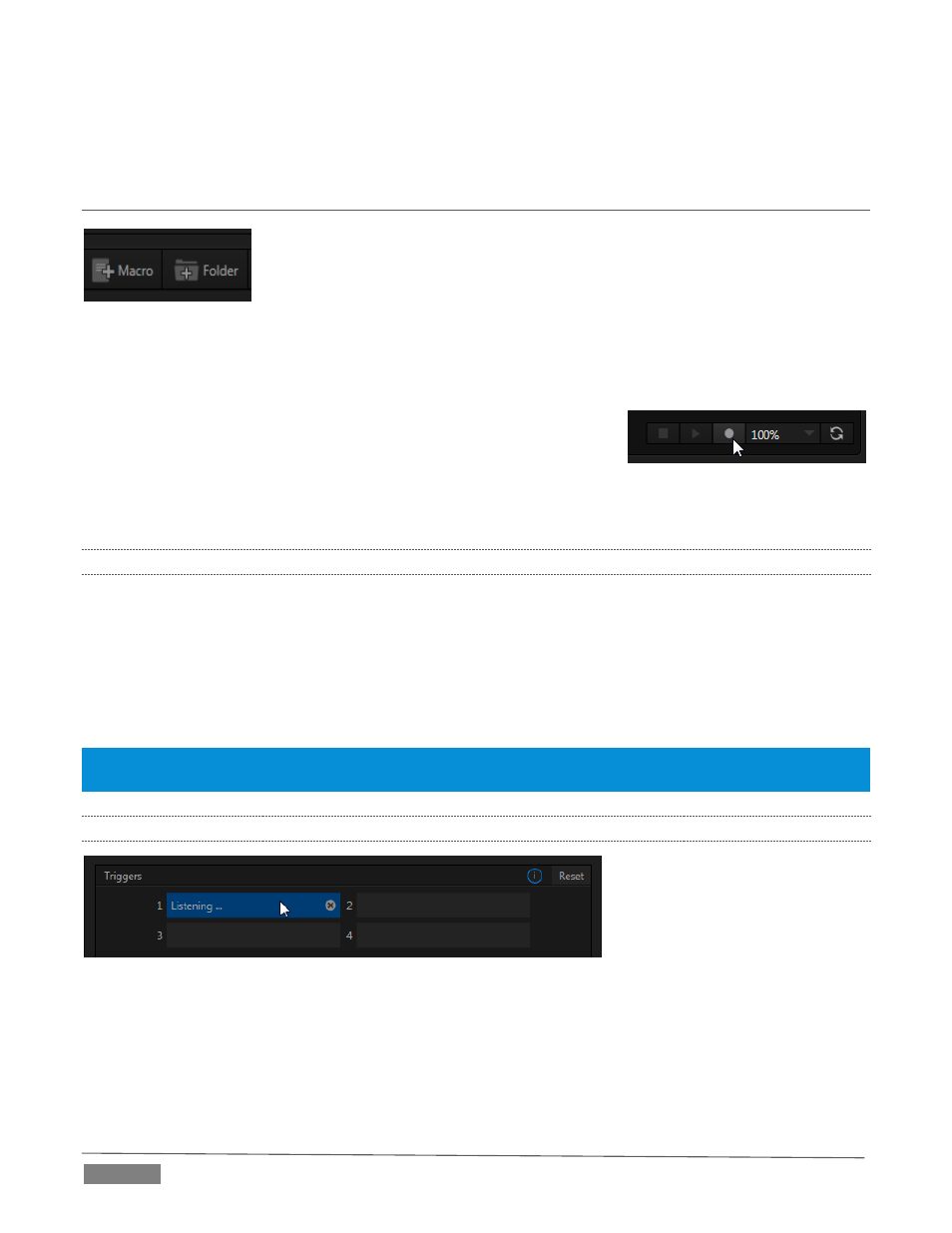Ection, Ecording, Acros – NewTek TriCaster Advanced Edition User Guide User Manual
Page 192: 1 snapshot mode, 2 triggers

Page | 180
Click Macros to show a menu containing a Configure Macros item. This opens a large panel that allows to you
create, organize, and even edit macros.
SECTION 17.1
RECORDING MACROS
Creating a new macro is simple. Buttons at upper right let you add folders and
macros. Click the first to add a folder and name it. Selecting a folder in the list (other
than the System Macros folder) enables the Add Macro button (Figure 227). Click
this button to add a new macro entry.
Continue to define the macro by clicking the Record button at the bottom of the panel, and then just go ahead
and perform the sequence of operations you wish to include in the macro. You can use mouse, keyboard, and
Control Surface operations when doing so.
When finished, click the Stop button to complete recording. Test the new
macro by clicking the Play button. You’ll notice that an animated bar in
the background of the macro’s entry in the list tracks playback progress.
Of course, you can modify the playback rate using the menu next to the Record button. You can even set
macros to loop using the button at extreme right.
17.1.1
SNAPSHOT MODE
One option in this menu bears explanation early on – Snapshot. When you choose Snapshot as the macro’s
‘speed’, you essentially force it jump to its end result as fast as the system can get there. Snapshot mode is
very useful for macros that configure TriCaster to a particular state.
One example would be when you want to instantly reconfigure M/Es with different virtual sets for a scene
change; or perhaps you want to quickly disable LiveMatte for all Media Players at once. The possibilities are
endless.
Hint: You can record a macro that includes other macros. Depending on your order of operations, you may need
to re-highlight the newly recorded macro in the list to show its Stop control (to end macro recording).
17.1.2
TRIGGERS
FIGURE 229
The Triggers controls located near the bottom of the Macro Configuration panel allow you to configure one
or more ways to launch macros. For example, select a macro, click in one of the Trigger boxes, and then press
a suitable keyboard shortcut to assign it to that macro. (See the accompanying Automation and Integration
Guide for a more extensive discussion of triggering macros, including MIDI control and more.)
FIGURE 227
FIGURE 228
